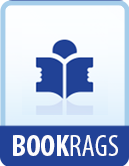4. Excerpts From Congressional Debates
================================================
================== The following excerpts are reprinted from the Congressional Record of September 22, 1976, including statements by Mr. Kastenmeier (Chairman of the House Judiciary Subcommittee responsible for the bill) on the floor of the House of Representatives. =====================
=============================================
MR. KASTENMElER.
* * *
Mr. Chairman, before concluding my remarks I would like to discuss several questions which have been raised concerning the meaning of several provisions of S. 22 as reported by the House Judiciary Committee and of statements in the committee’s report, No. 94-1476.
* * *
Another question involves the reference to “teacher” in the “Agreement on Guidelines for Classroom Copying in Not-for-Profit Educational Institutions” reproduced at pages 68-70 of the committee’s report No. 94-1476 in connection with section 107. It has been pointed out that, in planning his or her teaching on a day-to-day basis in a variety of educational situations, an individual teacher will commonly consult with instructional specialists on the staff of the school, such as reading specialists, curriculum specialists, audiovisual directors, guidance counselors, and the like. As long as the copying meets all of the other criteria laid out in the guidelines, including the requirements for spontaneity and the prohibition against the copying being directed by higher authority, the committee regards the concept of “teacher” as broad enough to include instructional specialists working in consultation with actual instructors.
Also in consultation with section 107, the committee’s attention has been directed to the unique educational needs and problems of the approximately 50,000 deaf and hearing-impaired students in the United States, and the inadequacy of both public and commercial television to serve their educational needs. It has been suggested that, as long as clear-cut constraints are imposed and enforced, the doctrine of fair use is broad enough to permit the making of an off-the-air fixation of a television program within a non-profit educational institution for the deaf and hearing impaired, the reproduction of a master and a work copy of a captioned version of the original fixation, and the performance of the program from the work copy within the confines of the institution. In identifying the constraints that would have to be imposed within an institution in order for these activities to be considered as fair use, it has been suggested that the purpose of the use would have to be non-commercial in every respect, and educational in the sense that it serves as part of a deaf or hearing-impaired student’s learning environment within the institution, and that the institution would have to insure that the master and work copy would remain in the hands of a limited




